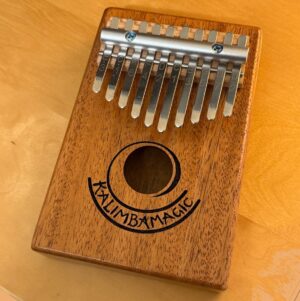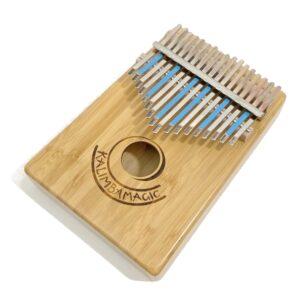
TIP: A Karimba Improvisational Strategy Part 4
Mixing it up on the left side Mixing it up on the left While the three lower right notes sound great together (the C#, B, and A from the previous tip), the best is when you can create melodies using both the lower row notes and the upper row notes. Notice the pattern here – the first note of each measure is changing, but that changing note is answered by an unchanging two note phrase. The long range plan in this series: the right thumb will play something low, strong, and supportive while the left thumb plays a dancing melody. Ultimately, I’d like you to be able to improvise on





